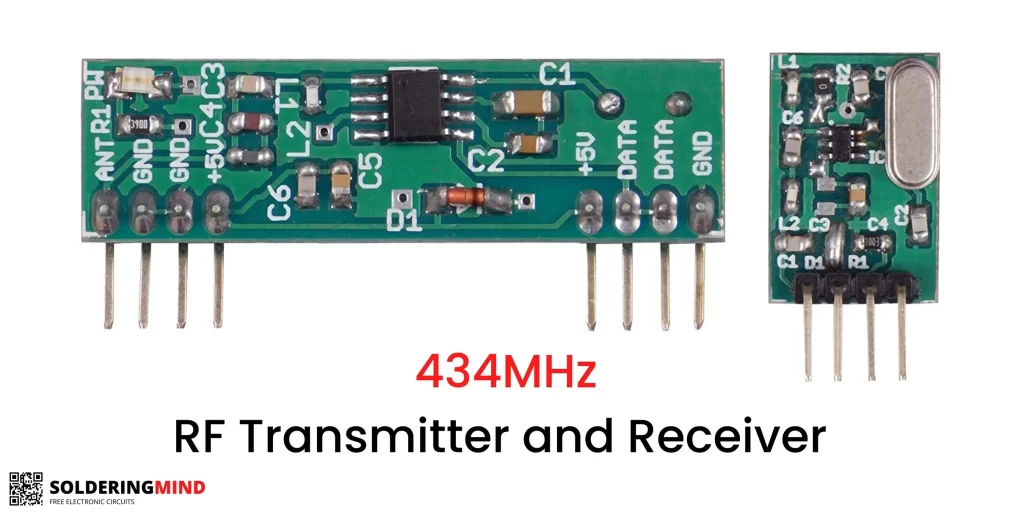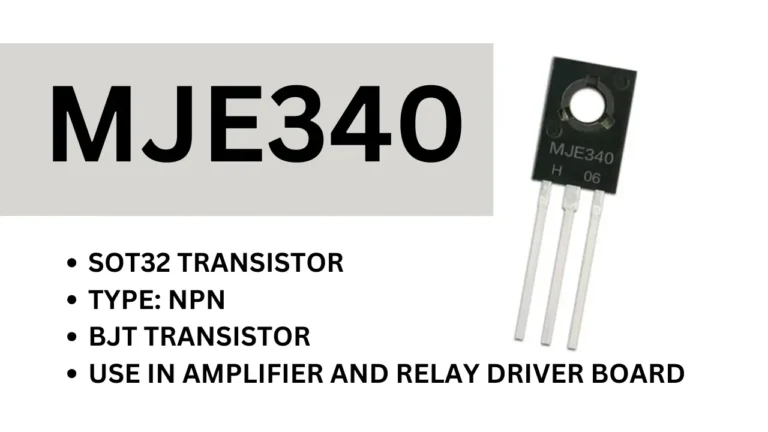A 434MHz RF module is a type of wireless communication device that sends radio frequency signals at a frequency of 434MHz. Lets Check in detailed about working, Pin configuration and specification of 434MHz rf modules.
Introduction to RF Module
RF modules are commonly used in various applications such as remote control systems, wireless alarm systems, and wireless sensor networks.
The module generally consists of a transmitter circuit, a coil antenna, and a data input pin.
The transmitter circuit converts the data input signal into a modulated RF signal, which is then transmitted by the coil antenna.
The data input pin can be connected to a microcontroller or other electronic device to provide the data that needs to be transmitted.
These modules are known for their low power consumption, small size, ease of use, and low cost.
However, it’s essential to note that they may be vulnerable to interference from other wireless devices that operate in the same frequency band.
Therefore, it’s crucial to design and test the communication system carefully to ensure that the data transmission is reliable and accurate.
Working
The 434MHz RF transmitter and receiver system work hand-in-hand to establish wireless communication.
The transmitter module sends radio frequency signals at a frequency of 434MHz, which are then received by the receiver module. Both modules have different components and functions.
The 434MHz RF transmitter module includes a data input pin, a transmitter circuit, and a coil antenna.
The data input pin is linked to an electronic device, such as a microcontroller, that provides the data to be transmitted.
The transmitter circuit converts the data input signal into a modulated RF signal, which is then transmitted by the coil antenna as radio waves at a frequency of 434MHz.
The 434MHz RF receiver module has an antenna, a receiver circuit, and a data output pin.
The antenna receives the radio waves sent by the transmitter module. The receiver circuit extracts the original data signal from the received radio waves by demodulating them.
This signal is then transmitted to the data output pin and can be linked to an electronic device, such as a microcontroller, to receive the data signal.
434MHz RF Transmitter Module
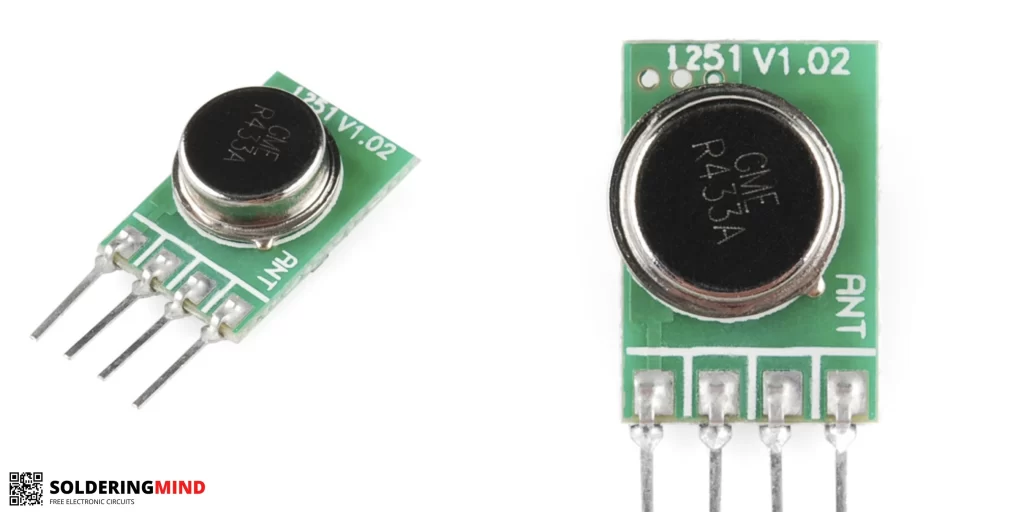
Pin Configuration
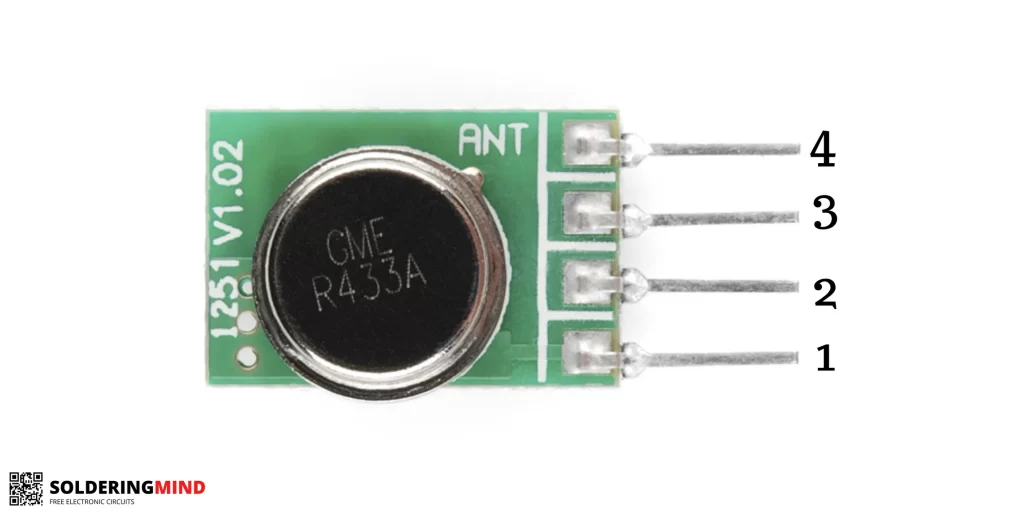
| PIN NUMBER | FUNCTION |
| 1 | Gnd |
| 2 | data in |
| 3 | VCC |
| 4 | Antenna |
Features
Operating Frequency Range: 433.92MHz
Actual Circuit Shape: SAW
Date Rate: 8Kbps
Max Supply Voltage: 1.5~12V
Output Power : 14dBm
Working temperature: -20~+85°C
Solder temperature: 230°C at 10 seconds.
434MHz RF receiver module
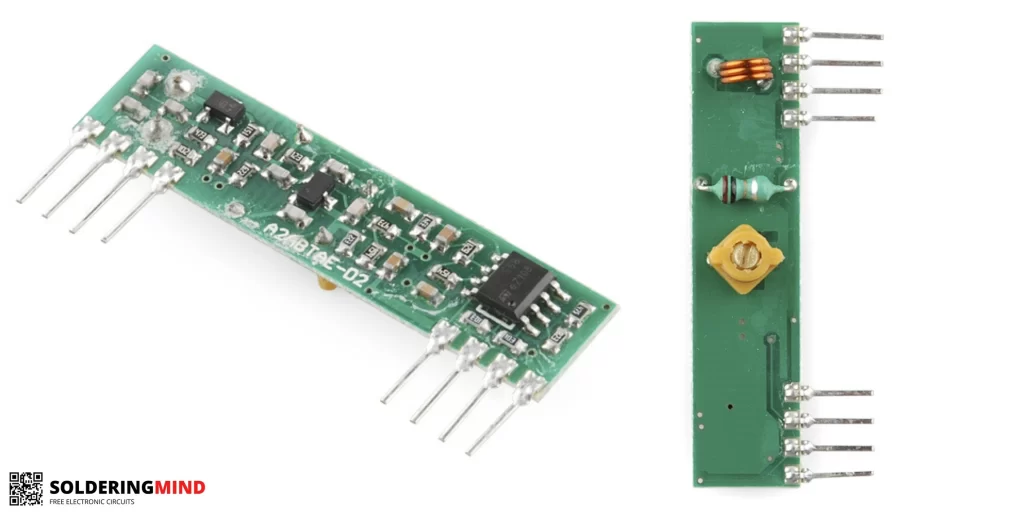
Pin configuration
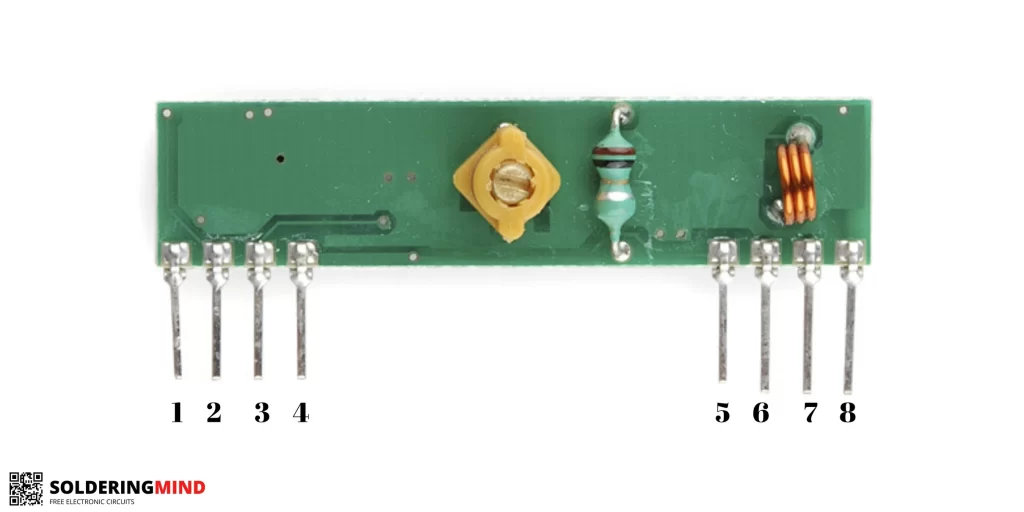
| PIN NUMBER | FUNCTION |
| 1 | Gnd |
| 2 | Digital Out |
| 3 | Linear Out |
| 4 | Vcc |
| 5 | Vcc |
| 6 | Gnd |
| 7 | Gnd |
| 8 | Antenna |
Conclusion
To sum up, a 434MHz RF transmitter module is a wireless communication device that sends radio frequency signals at a frequency of 434MHz.
It is utilized in various applications such as remote control systems, wireless alarm systems, and wireless sensor networks.
The module consists of a transmitter circuit, a coil antenna, and a data input pin. It is popular for its low power consumption, small size, ease of use, and affordability.
However, other wireless devices operating in the same frequency band may interfere with the data transmission, which can affect its reliability and accuracy.
Therefore, it is crucial to design and test the communication system meticulously to ensure that the data is transmitted reliably and accurately.

